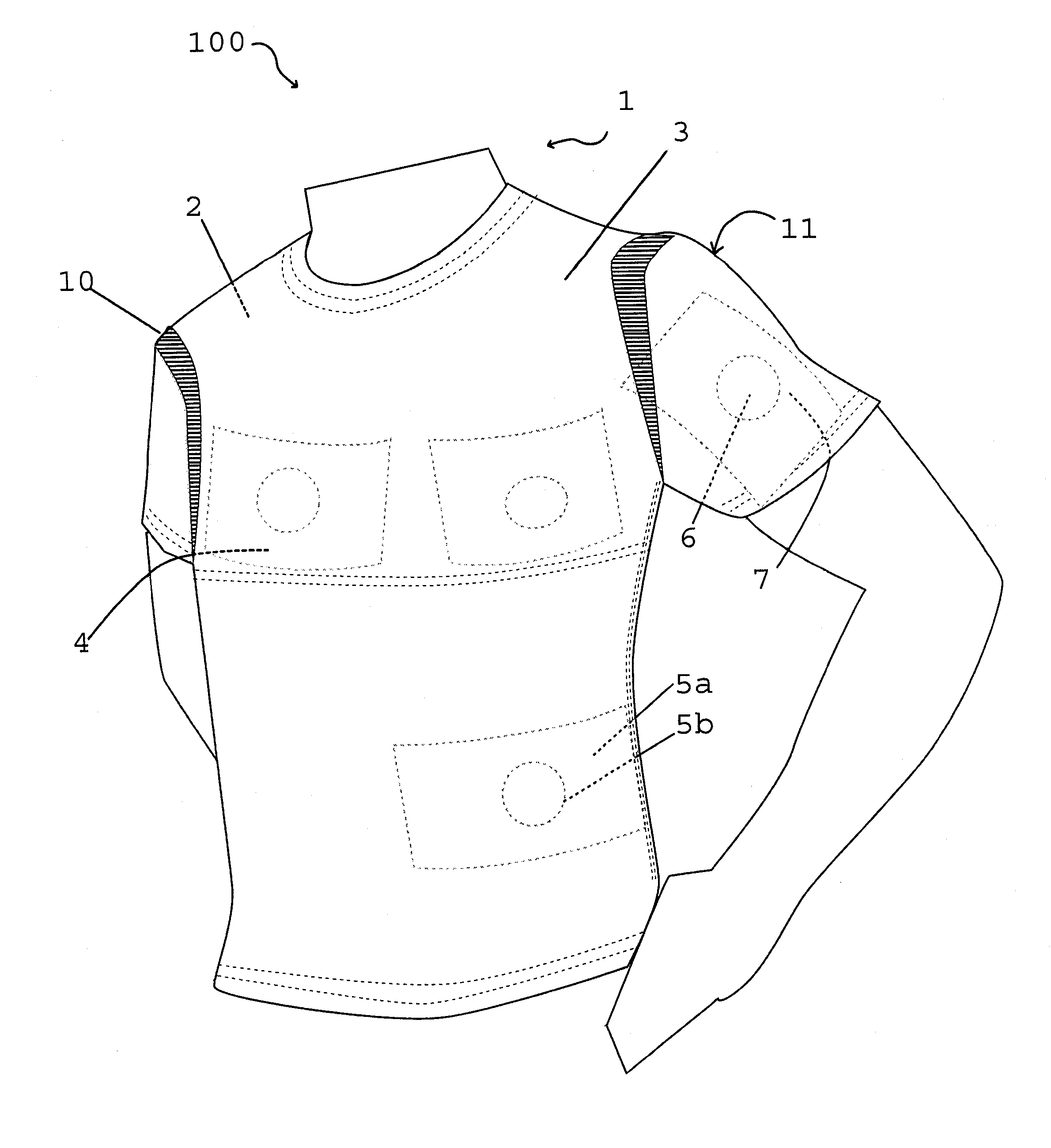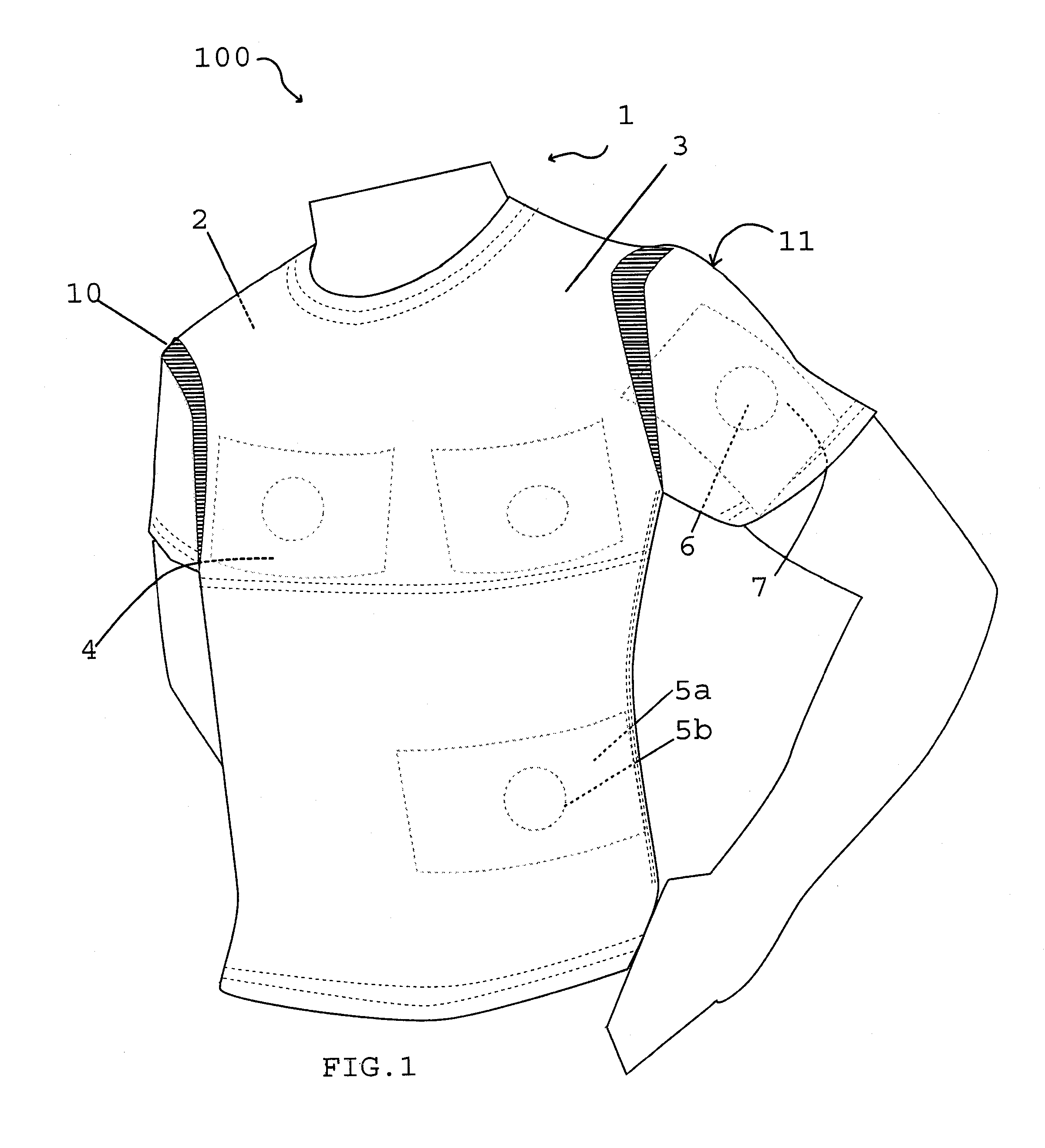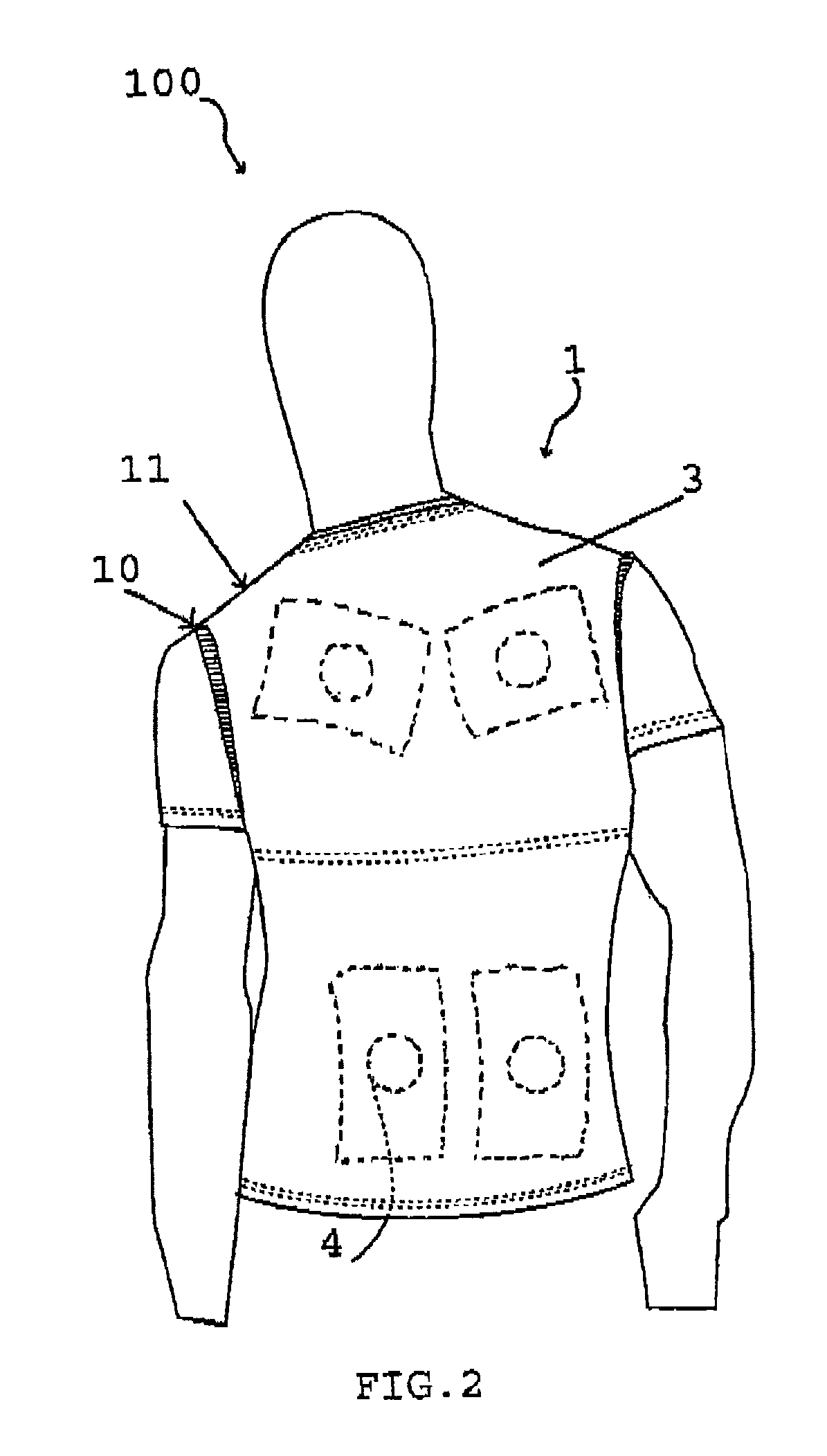Temperature Altering Garment and Methods of Use Thereon
a technology of temperature altering garments and garments, applied in the field of clothing, can solve the problems of inability to simultaneously apply thermal transfer elements to more than a few people, the method has significant disadvantages, and the person is unable to simultaneously engage in other activities that require the use of hands, so as to prevent injury to muscles, keep body parts warm, and avoid weakening the engagement
- Summary
- Abstract
- Description
- Claims
- Application Information
AI Technical Summary
Benefits of technology
Problems solved by technology
Method used
Image
Examples
Embodiment Construction
[0046]FIGS. 1 to 3 generally depict a garment 100 having a first layer 10, an outer layer 11, a thermal transfer element 4, a first fastener 5A, and a second fastener 5B. The garment 100 is the entire combination; the article of clothing 1 is the piece of apparel to which thermal transfer elements are secured.
[0047]An engagement between the first fastener 5A and the second fastener 5B removably and adjustably secures the thermal transfer element 4 to any location 6 on the interior surface 2 of the outer layer 11 of the article of clothing 1. “Removably and adjustably” secured means that the thermal transfer element can be removed without damaging the fasteners or otherwise dismantling the garment, and can be reattached in a different location. After attachment, heat transfer takes place between the thermal transfer element 4 and a body part 7 in contact with the location 6 on the article of clothing 1 where the thermal transfer element 4 is secured. The location 6 is “in contact” wi...
PUM
 Login to View More
Login to View More Abstract
Description
Claims
Application Information
 Login to View More
Login to View More - R&D
- Intellectual Property
- Life Sciences
- Materials
- Tech Scout
- Unparalleled Data Quality
- Higher Quality Content
- 60% Fewer Hallucinations
Browse by: Latest US Patents, China's latest patents, Technical Efficacy Thesaurus, Application Domain, Technology Topic, Popular Technical Reports.
© 2025 PatSnap. All rights reserved.Legal|Privacy policy|Modern Slavery Act Transparency Statement|Sitemap|About US| Contact US: help@patsnap.com



